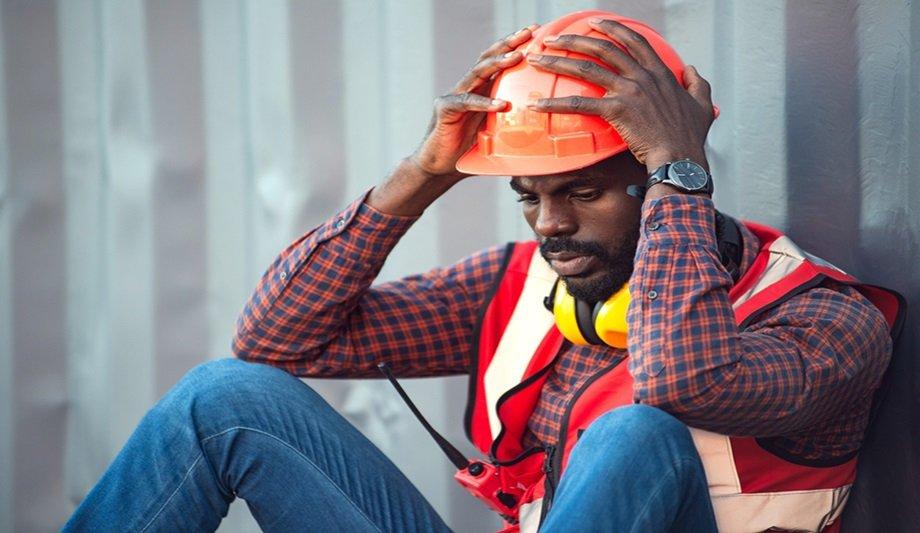How can security technologies protect lone workers?
Editor Introduction
There is safety in numbers, or so the expression goes. Generally speaking, several employees working together tend to be safer than a single employee working alone. Even so, some environments require that workers complete their jobs alone, thus presenting a unique combination of security vulnerabilities. The U.S. Occupational Safety and Health Administration (OSHA) defines a lone worker as “an employee working alone, such as in a confined space or isolated location.” We asked this week’s Expert Panel Roundtable: How can security technologies help to protect "lone workers?"
“Lone workers” can be many things, from people working at home to those working in harsh or remote field locations. While all these scenarios are vastly different, they have one main thing in common: the worker is operating outside of the network perimeter set up by the company. This increases the potential of that worker to act as a conduit through which attackers can access corporate systems and data. Zero-trust network access is one technology that can help reduce the likelihood of this happening. By gating access to both on-premises and cloud applications, it can determine whether a device and user are legitimate or not. That makes it harder for attackers to move laterally from a lone worker’s machine into CRM, ERP, and other critical applications. Additionally, endpoint detection and response solutions and strong multi-factor authentication policies can help determine if a user’s device is doing something anomalous and should be blocked.
Lone workers are often more at risk of employee theft or injury due to the lack of supervision and assistance as these employees conduct their work independently, isolated from others. Examples in retail would be overnight security personnel, sales floor employees, workers assigned to the stockroom, or warehouse workers operating forklifts. Because of this isolation, there is an increased risk of physical harm, theft, or worse. Retailers can mitigate these risks by conducting risk assessments and implementing modern surveillance technology. With intelligent surveillance, AI-driven analytics can provide real-time alerts that can alert security or store management if there is an accident like a box falling on a lone worker, or if the individual slips and falls. By installing network solutions, there is an added level of protection and creates a sense of safety and a better work environment.
As businesses attempt to reduce labor costs while keeping pace with customer expectations, many are increasingly relying on lone workers for opening, closing, third shifts, curbside deliveries, and other outside customer interactions. An interactive remote monitoring solution with video and two-way audio capabilities enables trained security staff to see, hear, and communicate with lone employees to ensure their personal safety and make sure the premises remain secure 24/7. Virtual guard services can scan the location to look for any potential threat throughout the day and night. Wearable personal protection monitoring solutions can also be directly integrated with interactive 24/7 Command and Control Centres. A properly designed personal protection device delivers comprehensive situational awareness by sending time/location stamped GPS coordinates to authorities. It also captures evidentiary-grade photos providing hard evidence for law enforcement. Being cellular-based, there’s no limit to how far an employee can be from the business.
Lone actor attacks are challenging to anticipate because there’s less information to infiltrate or intercept. Despite this, organisations can disrupt these types of incidents with tools and processes to integrate, analyse, and disseminate intelligence to multiple teams that manage risk in the enterprise. While there may be less information to consider, lone assailants can leave important clues regarding their intentions throughout the attack cycle. Weaving together data and intelligence, corporate security teams can use holistic security technology to identify indicators and work together to mitigate attacks before they occur. Technology provides a convergence element for security and risk groups, including those responsible for human resources, cybersecurity, and physical security, by dissolving silos by sharing intelligence across departments and creating a comprehensive threat picture. Although one perpetrator is harder to spot, integrated data from multiple sources promotes collaboration and gives corporate security teams a distinct boost in identifying threats from lone actors.
To select the proper security technology for lone workers, we must know the industry and working scenario of each lone worker. There are various sources of danger, including:
- From oneself, for example, sudden physical illness, or mental breakdown.
- From misoperation, for example, not using equipment according to specification.
- From omission of management, for example, the disrepair of infrastructure, or the wrong placement of goods.
- From other people, for example, violence, aggression, or injury from customers.
- From nature, for example, floods, thunderstorms, or attacks from animals.
The most common solution is to install security cameras and sensors to identify the potential and existing risks in the first place. For example, to design intelligent behavior algorithms to analyse the operation of workers. If the worker doesn’t follow the specification, the worker will receive a warning and management will be notified. If the security cameras and sensors detect any difference in infrastructure or area by comparing it with the normal data, it will give an early warning of potential danger. Some security cameras have object identification and crowd detection, which will help to identify dangerous goods like knives or guns or to detect mass disturbances. Wearable security technologies can help to protect lone workers, especially in confined spaces, open indoor areas, or working outdoors. For example, the smartwatch could monitor the heart rate, blood pressure, blood oxygen, and so on. If the lone worker is suffering from sudden danger, the measurement will give fast reflection to the monitor platform and send a notification to other people.
Editor Summary
Security strategies and technologies provide a range of alternative approaches when it comes to keeping a lone worker safe. Security challenges of lone workers include cybersecurity risk and vulnerability to outside attacks. Lone workers also face the possibility of physical injury, sudden illness, or a mental breakdown. In any organisation, maximising the safety and security of a lone worker, ironically, involves teamwork and the involvement of multiple stakeholders whose top priorities are safety and security.
- Related links
- Anviz Access control software
- Anviz CCTV software
- Axis Communications CCTV software
- Axis Communications Digital video recorders (DVRs)
- Axis Communications Access control software
- Anviz Network video recorders (NVRs)
- Axis Communications Network video recorders (NVRs)
- Axis Communications Video signal devices & accessories
- Magnetic Stripe Access control cards/ tags/ fobs
- ANPR Software CCTV software
- Card Access control cards/ tags/ fobs
- Event Network video recorders (NVRs)
- Biometric Access control software
- Control Software CCTV software
- Intelligent motion detection Video motion detectors
- 10BaseT/100BaseT Ethernet Video motion detectors
- Real Time Network video recorders (NVRs)
- Card Access control software
- Mifare Access control cards/ tags/ fobs
- Proximity Access control cards/ tags/ fobs
- Fob Access control cards/ tags/ fobs
- Detection Software CCTV software
- Contact Access control software
- Drawing Software CCTV software
- Smart Card Access control cards/ tags/ fobs
- Tag Access control cards/ tags/ fobs
- Mifare Access control software
- Real Time / Timelapse Network video recorders (NVRs)
- Wiegand Access control cards/ tags/ fobs
- Proximity Access control software
- IP Surveillance Software CCTV software
- Smart Card Access control software
- Management Software CCTV software
- Recording Software CCTV software
- Monitoring Software CCTV software
- Surveillance Software CCTV software
- Transmission Software CCTV software
- Video loss alarm unit Video signal devices & accessories
- Server software for MSDE Access control software
- User tool for control panel Access control software
- Video Signal Generator Video signal devices & accessories
- Version Upgrade Access control software
- Visitor Management tool Access control software













